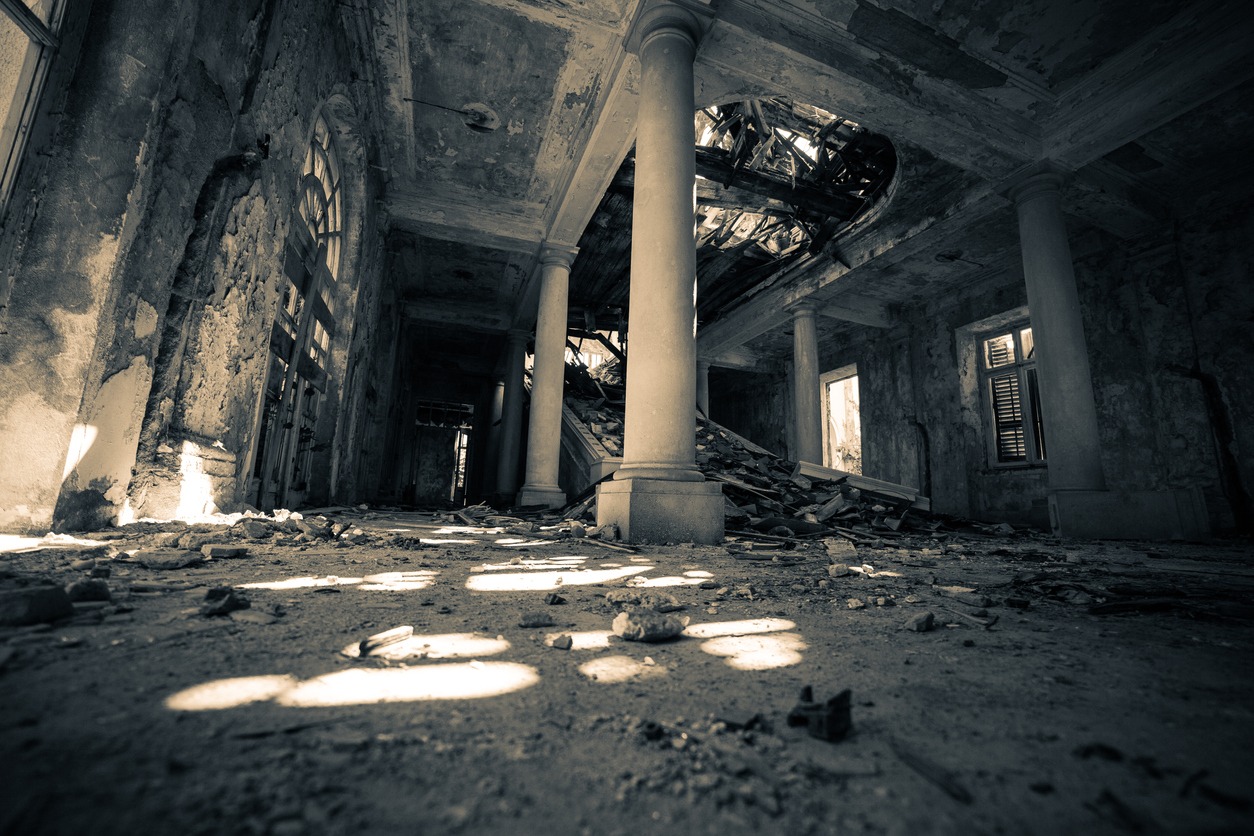Have you ever been captivated by the allure of abandoned places? Well, you’re in for a treat as we delve into the intriguing world of abandoned hotels across the United States.
Imagine walking through the corridors of once-grand hotels that now stand in silence, their storied pasts echoing through the empty halls. These hotels, from luxurious beachside resorts to historic urban inns, were once bustling with guests and are now chapters of a bygone era, each with its own unique tale of glamour, decline, and eventual abandonment.
In this article, we’re going to explore these fascinating relics of American hospitality. We’ll uncover the stories behind their rise and fall and what these grand old buildings say about changing tastes, economic shifts, and the passage of time. So, let’s step into the world of forgotten luxury and lost elegance to discover the secrets of America’s abandoned hotels.
Baker Hotel, Texas
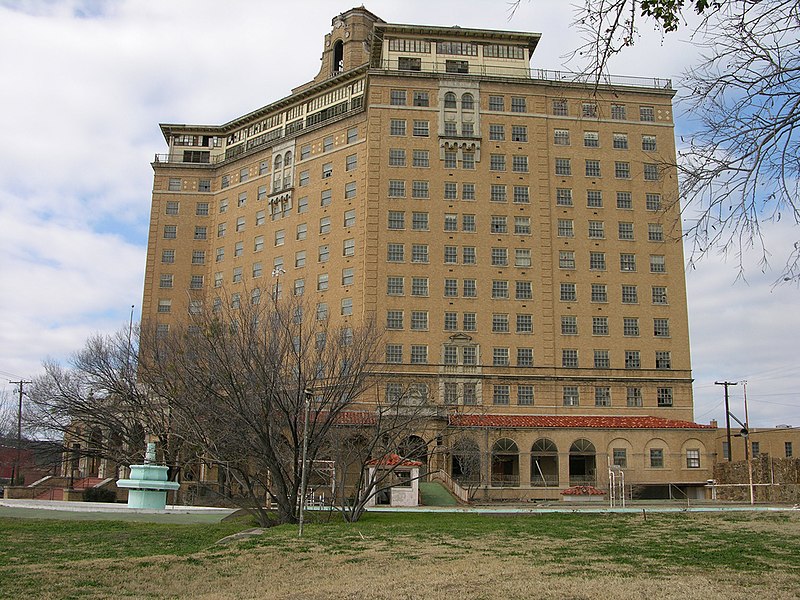
One of the most popular and well-known abandoned hotels in the United States is the Baker Hotel in Mineral Wells, Texas. Opened in 1929, this iconic hotel was a symbol of luxury and elegance, attracting celebrities, politicians, and socialites from all over the country. The Baker Hotel was famed for its mineral water spa treatments, which were believed to have healing properties.
Spanning 14 floors, the Baker Hotel was one of the first in Texas to offer an Olympic-size pool and air conditioning. However, after decades of operation, changing travel trends and economic decline led to its closure in 1972. Since then, the hotel has remained empty, though it has attracted considerable interest from urban explorers, photographers, and paranormal investigators due to its grand architecture and storied history.
Igloo City, Alaska
Igloo City in Alaska is one of the most unique and visually striking examples of abandoned structures in the United States. Located along the George Parks Highway near Cantwell, this peculiar structure was originally envisioned as a hotel and resort in the 1970s, designed to capitalize on the growing tourism industry in Alaska.
The hotel’s most distinctive feature is its shape, resembling a giant igloo, which makes it an unmistakable landmark along the highway. The four-story building was meant to offer a range of amenities, including rooms, a restaurant, and a gift shop, ideally situated to attract travelers heading to Denali National Park.
However, the Igloo Hotel was never completed due to a combination of construction issues and failure to meet building codes. As a result, it never opened its doors to guests and has stood empty for decades. Over the years, the unfinished, windowless structure has become a curiosity and an iconic photo opportunity for passersby. It endures the harsh Alaskan weather, slowly deteriorating but remaining an intriguing piece of the Alaskan landscape.
Grossinger’s Catskill Resort Hotel, New York
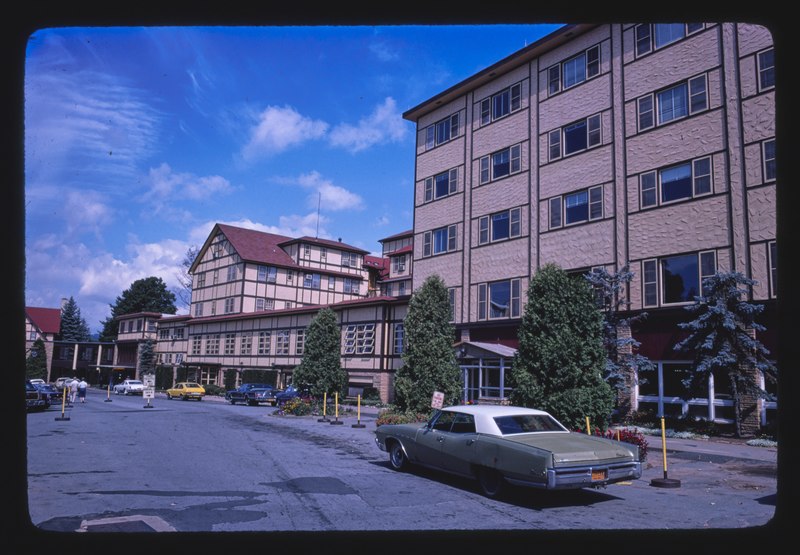
Nestled in the picturesque Catskill Mountains, Grossinger’s Catskill Resort Hotel was the epitome of a luxurious getaway during its heyday. Opening its doors in the 1910s, it quickly became a sought-after destination, especially among New Yorkers seeking a retreat from city life.
What made Grossinger’s stand out was its sheer scale and variety of amenities. We’re talking about a sprawling complex with its own post office, airstrip, and golf. It wasn’t just a hotel; it was practically a small town. Guests were treated to top-notch entertainment, including famous comedians and musicians, and the resort was even credited with being one of the places where the concept of vacationing took on a whole new meaning in America.
Grossinger’s also played a significant role in popularizing winter sports, particularly skiing, in the region. And, fun fact, it’s said to have inspired the classic movie “Dirty Dancing.” However, as time passed and vacation trends shifted, Grossinger’s began to lose its sparkle. It struggled to keep up with the changing times and eventually closed its doors in the mid-1980s.
Today, the once-grand resort stands abandoned, its opulent halls and guest rooms silent. Yet, the ruins of Grossinger’s still hold a certain nostalgic charm, a reminder of a bygone era of American leisure.
Besides Grossinger’s Catskill Resort Hotel, the Catskill Mountains is also the to the world’s oldest forest. For more information, read our article titled Learn About the World’s Oldest Forest Discovered in the Catskill Mountains.
The Lee Plaza Hotel, Michigan
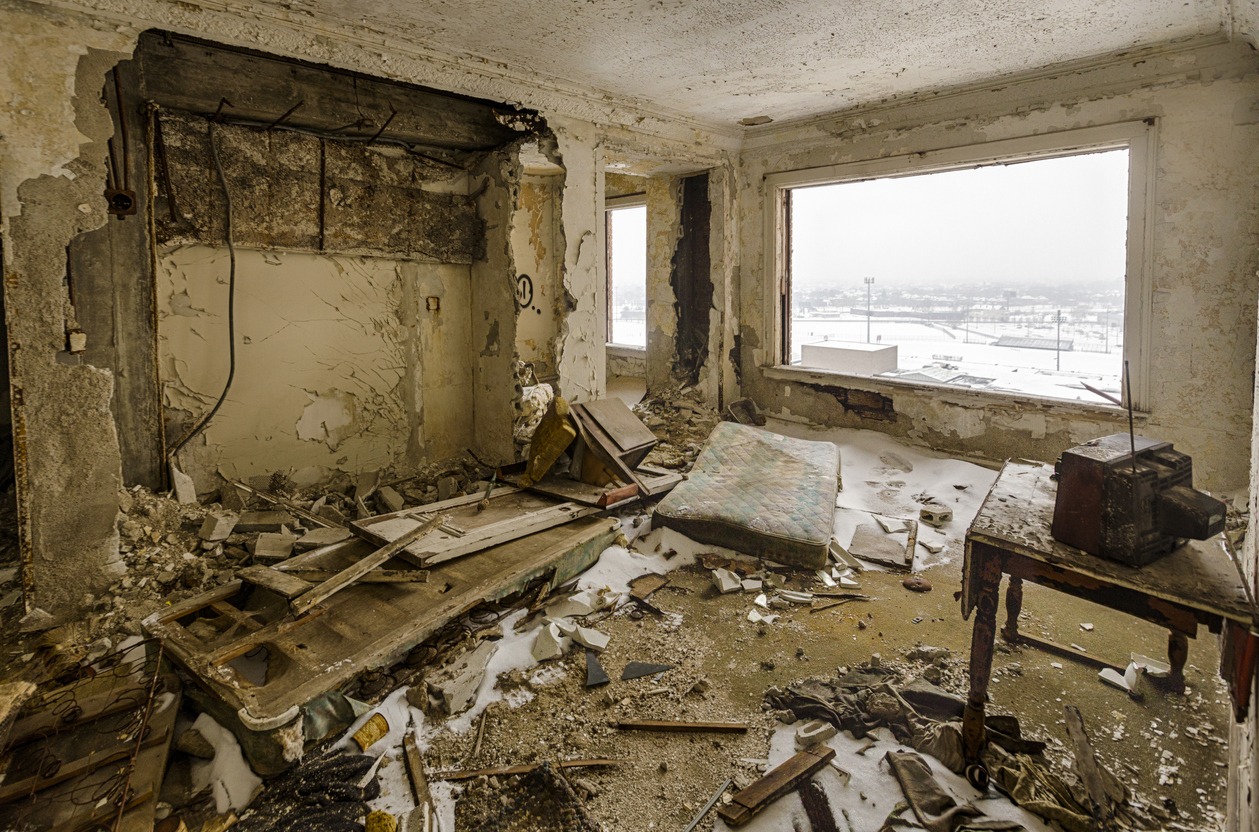
The Lee Plaza Hotel is a real piece of history. Opened in 1928, it was the epitome of luxury and elegance in its time. Picture this: a 15-story Art Deco building, complete with ornate details, a grand lobby, and all the trimmings of high-end hospitality. It was more than just a hotel; it was a symbol of Detroit’s prosperity during the Roaring Twenties.
This hotel was a hotspot for socialites and a prominent feature of the city’s skyline. But, as Detroit’s fortunes waned, so did the hotel’s. By the 1960s, it had fallen into disrepair and eventually closed its doors. Now, it stands as an abandoned relic of a bygone era, but even in its decay, there’s a kind of haunting beauty to it.
The Lee Plaza Hotel is like a time capsule, holding stories of the city’s past grandeur and the changing tides of time. It’s a fascinating spot for anyone interested in urban history and architecture, that’s for sure.
The Majestic Hotel, Arkansas
The Majestic Hotel in Hot Springs, Arkansas, is a haunting relic with a history as rich as the thermal waters it once stood over. Opened in the late 19th century, this hotel was once a haven for those seeking the therapeutic benefits of the area’s famous hot springs. Picture this: a grand, elegant building, a symbol of luxury and relaxation, where guests lounged in opulent rooms and indulged in spa treatments. It was more than just a hotel; it was a social hub, attracting visitors from all over, including some pretty high-profile guests.
But as time marched on, the Majestic, much like many historic hotels, began to lose its luster. The rise of modern resorts and changing vacation trends took a toll. The hotel expanded over the years, but by the late 20th century, it was struggling to keep up with the times. It finally closed its doors in 2006.
Today, the Majestic Hotel stands abandoned, a ghostly shadow of its former glory. The building, partially destroyed by a fire in 2014, has become a subject of local concern and debate over its future. Its crumbling façade and the overgrown vegetation that now envelops it serve as a poignant reminder of the transient nature of grandeur. You can also discover more abandoned places in Arkansas by reading our article about the Ghost Towns in Arkansas and Their Stories.
Buck Hill Inn, Pennsylvania
Buck Hill Inn, nestled in the Pocono Mountains of Pennsylvania, is an intriguing case of abandoned opulence and history. Opened in 1901, this grand resort was once a premier destination, renowned for its stunning architecture and sprawling 400-acre grounds. Designed to be a luxurious retreat, it featured over 400 rooms, elegant ballrooms, and lush gardens, catering to the elite looking for a mountain escape.
During its heyday, Buck Hill Inn was a hub of social activity, known for its high standards of service and exclusive clientele. However, as vacation trends shifted and newer resorts emerged, the inn began to struggle. The rise of air travel and changing leisure preferences in the late 20th century led to a gradual decline in its popularity.
The inn finally closed its doors in 1991, marking the end of an era. Since its closure, the once-magnificent structure has fallen into a state of decay, with its empty corridors and derelict rooms serving as a haunting reminder of the past.
Palms Motel, California
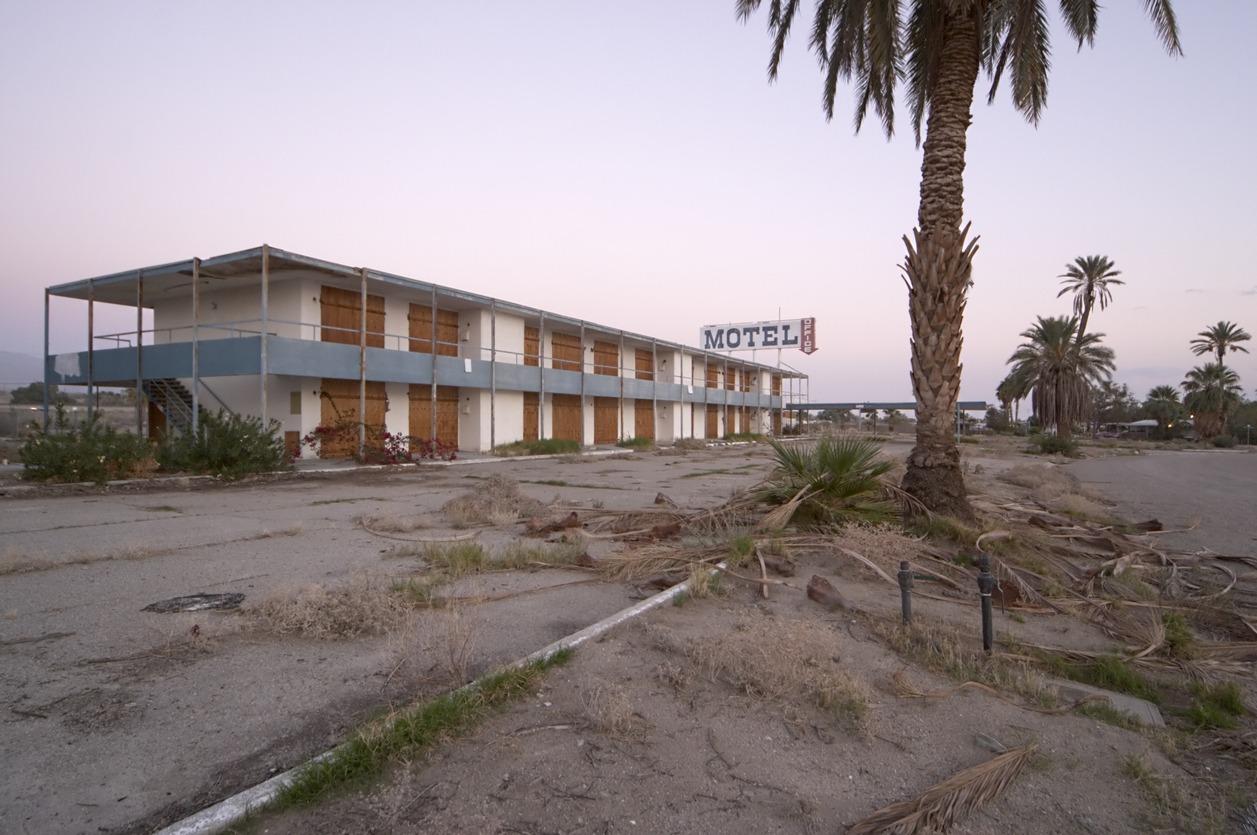
The Palms Motel in Salton Sea Beach, California, stands as a poignant reminder of the fluctuating fortunes of the Salton Sea area. Opened during the mid-20th century, this motel was once a symbol of the region’s booming popularity as a resort destination. The Salton Sea, initially created by accident due to a breach in an irrigation canal, quickly became a thriving tourist hotspot, attracting visitors with its water sports and vibrant wildlife. In this golden era, the Palms Motel thrived, offering travelers a comfortable stay in a picturesque setting.
However, as environmental issues began to plague the Salton Sea, including rising salinity and pollution levels, the area’s appeal sharply declined. The deteriorating condition of the sea led to a massive die-off of fish and birds, turning the once-bustling vacation spot into a virtually deserted area.
Consequently, establishments like the Palms Motel suffered. The motel, once a welcoming oasis for tourists, now stands abandoned, its empty rooms and faded signs a stark testament to the environmental and economic challenges that transformed the Salton Sea. Today, the Palms Motel is often visited by photographers and explorers drawn to its eerie, desolate beauty and the dramatic story of the rise and fall of Salton Sea Beach.
Conclusion
As we wrap up our exploration of abandoned hotels in the US, it’s clear that these structures are more than just empty buildings or relics of the past. Each of them tells a unique story, not just about the changing trends in travel and leisure but also about the broader shifts in our society and economy. It’s fascinating and a bit melancholic to witness these once-grand establishments now standing deserted. Yet, there’s a beauty in their decay and a powerful reminder of the impermanence of human endeavors.
As we think about these abandoned hotels, it’s interesting to ponder what the future holds for them. Will they be reclaimed by nature, revitalized for new purposes, or will they continue to stand as monuments to a bygone era? Only time will tell, but one thing is for sure – they will continue to captivate the imaginations of all who pass by or hear their stories.

